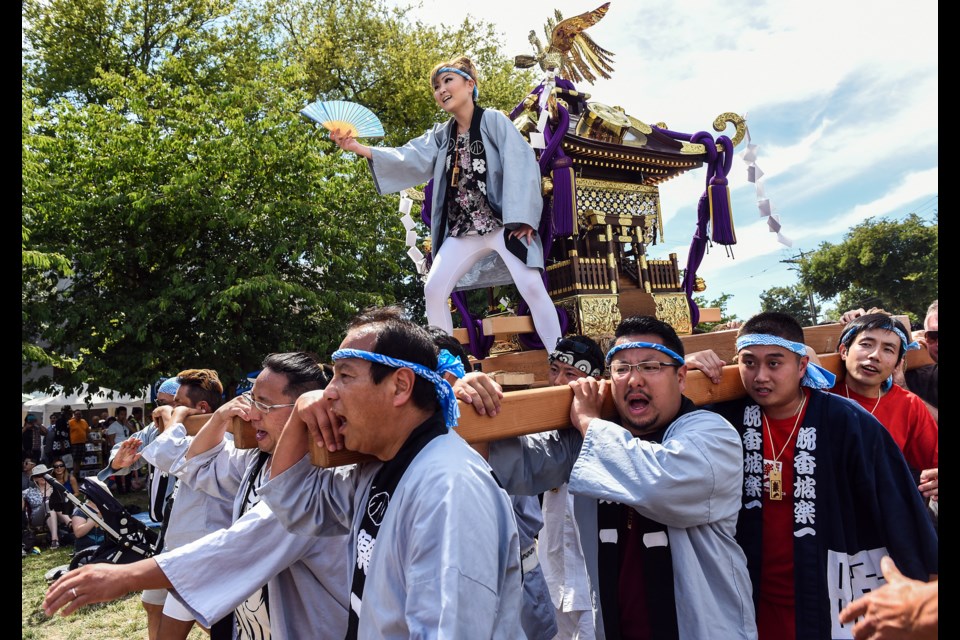The moving parts of the 39th annual Powell Street Festival, which took place this past weekend, included a number of different styles of martial arts, dance and performance. It also included a portable shrine, better known by its Japanese name of omikoshi, that cut a path through the masses of cheering people at Oppenheimer Park early Saturday afternoon.
The omikoshi itself looks like a miniature Japanese temple with a figure of a gold phoenix on its roof. It’s lavishly decorated with purple and gold colours and sits on horizontal poles so the carriers, made up of members of the Vancouver Rakuichi and friends, can hoist it on their shoulders.
“It’s an essential part of any festival in Japan,” said Mayu Takasaki, one of the festival volunteers. “It houses a deity — a spirit — and it resides in that palanquin. Once a year it comes out and carries out blessings.”
It is said the more raucous the parade, the more good fortune. While the procession advanced, a man in a traditional hapi with a megaphone shouted, “Wa shai! Wa shai! Wa shai!” which was then repeated by the carriers as well as the crowd, some of whom chased after the rocking omikoshi that moved in jerky, random directions like a slow-moving animal trying to escape potential captors.
It’s not just the shrine and carrying poles that need to be lifted — there’s also the person who rides on top, standing in front of the shrine and often holding on with just one hand. Today it was Nana Tamura’s job to chant and relay directions at the top of her lungs from the front carriers to the rear.
“It’s pretty tough to do, actually,” said the 26-year-old after the march ended and Vancouver Rakuichi members were efficiently disassembling the omikoshi. “I did cheerleading for a long time and [the group] thought it was going to be much of the same movement. It’s nothing like it! I thought it would be, too, balance-wise but nothing like it.”
Tamura has been part of the celebration for three years, recruited by her father Fujio Tamura who is one of the group’s leaders. She said she is not only part of the group’s next generation, but she’s also a little easier to carry than one of her dad’s friends.
“The men are getting older and were feeling a bit uneasy being up there,” she said with a laugh. “It’s extremely tiring but a lot of fun. It’s using a lot of my legs for me, just to keep the balance. Also, when they move, it’s supposed to move like a wave, so it’s hard to predict. But when I look down and I see everyone working in one unit and everyone’s passion — it’s wonderful to see.”
The Powell Street Festival celebrates life as it once was, and life as it now is. It is an important arts, culture and heritage celebration that remembers a Japanese Canadian neighbourhood that once thrived in the area but was suddenly uprooted during the Second World War. It also acknowledges and brings together the community that is now spread across the Lower Mainland. It is common to hear participants treat the festival as a family reunion of sorts.
Tamura is one of the many who treat the festival as a part of life, and plans on being a part of the omikoshi — and its appearance at the Powell Street Festival — for as long as she can.
“I’d like to do this for a long time,” she said. “At least until my kids are born. I would like to show them what it’s like.”
@rebeccablissett



